Top 20 Animals That Jump

The world of animals that jump, and animals that slither, showcases fascinating creatures harnessing remarkable leaping abilities.
These amazing animals have evolved to perfect the art of flying, from the acrobatic grasshoppers that populate our meadows to the jumping kangaroos that traverse the Australian desert.
These expert jumpers provide important insights into the complexities of evolution and the extraordinary diversity of life on our planet, regardless of whether they are motivated by predation, locomotion, or environmental obstacles.
Animals That Can Hop With Grace
Contents
Animals That Jump a Lot” and “Animals That Jump and Swim” represent a diverse group of creatures, each demonstrating unique jumping abilities.
From the elegant leaps of gazelles and the agile bounds of kangaroos to the aquatic prowess of frogs, animals that combine jumping with swimming showcase remarkable adaptability.
These animals have evolved specialized limb structures and muscles to excel both on land and in water. Observing these species reveals the fascinating ways in which they utilize their skills for survival, whether it’s escaping predators or efficiently foraging for food.
Animals That Jump
- Flea
- Grasshopper
- Kangaroo
- Frog
- Jerboa
- Wallaby
- Red Kangaroo
- Hare
- Springbok
- Praying Mantis
- Kangaroo rat
- Impala
- Jumping spider
- Jumping ant
- Jumping fish (e.g., flying fish)
- Jumping mouse
- Jumping snake
- Jumping stick insect
- Jumping bean weevil
- Jumping cavy (e.g., mara)
Flea (Siphonaptera)
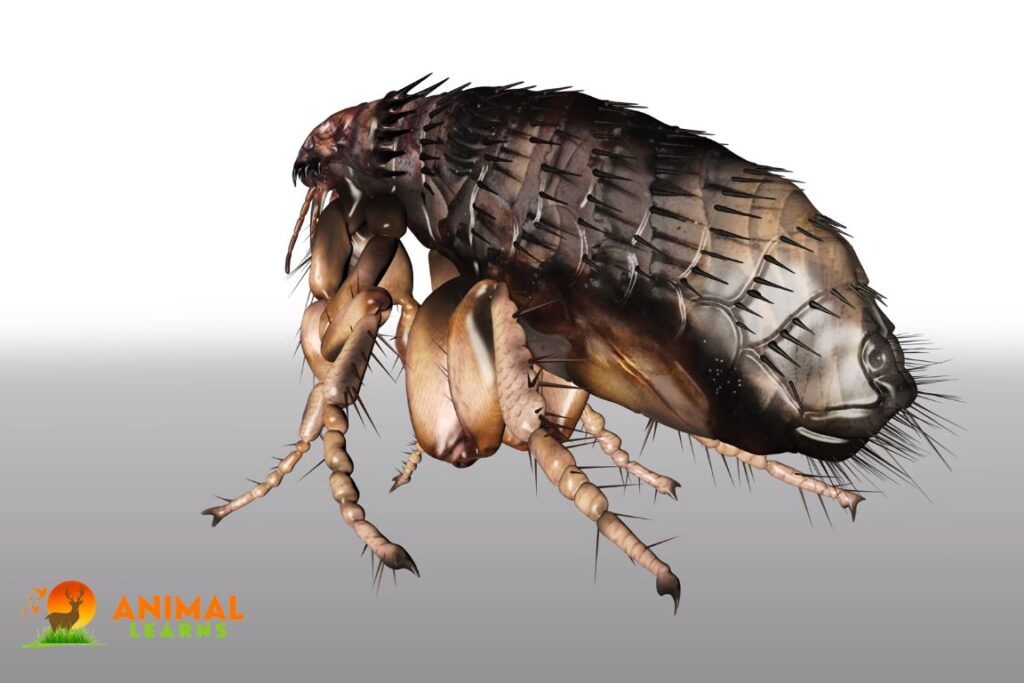
| Basic Information | Information |
| Scientific Name | Order Siphonaptera |
| Weight | Approximately 1-2 milligrams |
| Size | 1-4 mm in length |
| Color | Brown or black |
| Jumping Distance | About 350 times its body length |
| Jumping Height | Up to 18 cm |
The small yet strong flea makes for an interesting case study in the environment of animal mobility. Thanks to its powerful hind legs and the elastic qualities of the protein resilin, which is present in its body, it claims the unique capacity to propel itself to astounding heights in relation to its size.
Fleas are famous for their parasitic habits, but their skill at leaping is also anything to be admired.
Grasshopper (Orthoptera)

| Basic Information | Information |
| Scientific Name | Order Orthoptera |
| Weight | Varies by species, typically light |
| Size | Varies by species, 1-7 cm |
| Color | Often green or brown |
| Jumping Distance | 25-30 cm |
| Jumping Height | Varies by species |
One of the grasshoppers’ abilities is to jump. There are many different species of grasshoppers, and the difference is their ability to jump. They can reach a jumping height of around 25 centimeters. Maybe the distance is not that far away, and this is considering the small size of the grasshopper.
Kangaroo (Macropodidae)
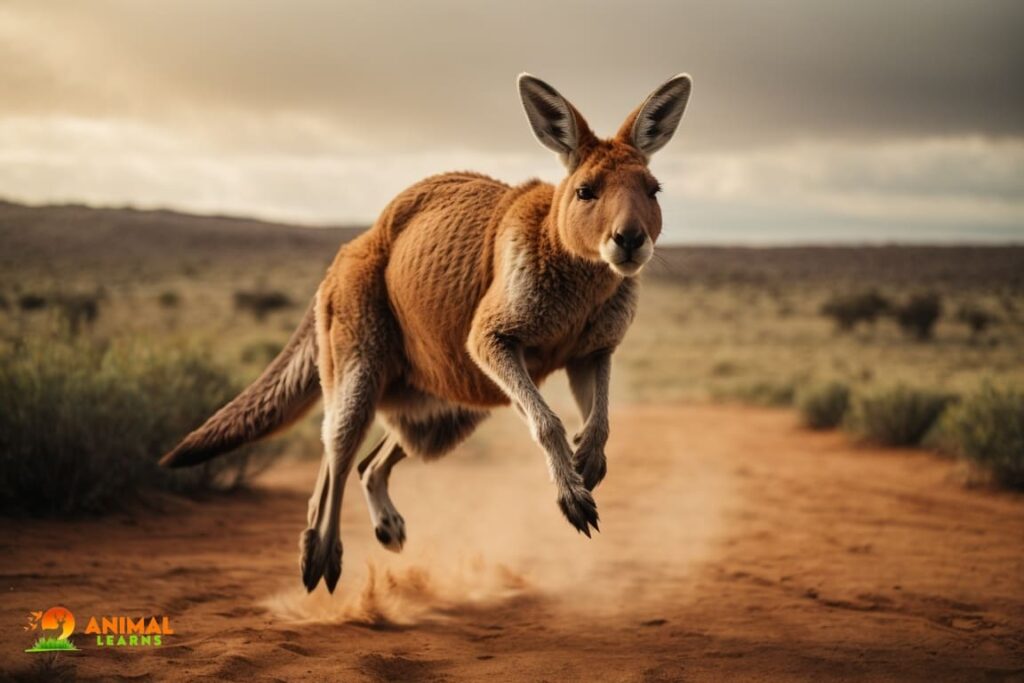
| Basic Information | Information |
| Scientific Name | Various species in family Macropodidae |
| Weight | Varies by species, 20-90 kg (44-198 lbs) for red kangaroos |
| Size | Varies by species, up to 1.8 m (5.9 ft) for red kangaroos |
| Color | Reddish-brown to gray |
| Jumping Distance | Red kangaroos can leap over 9 meters (30 ft) |
| Jumping Height | Up to 3 meters (10 ft) |
The kangaroo is the epitome of animals that jump and have been specially designed for jumping. These marsupials have powerful hind limbs and a unique structure that enables them to move through great distances with efficiency and grace.
In addition to being a means for getting around for kangaroos on land, their endless jumps also serve as an excellent survival technique in the Australian arid land
Frog (Anura)

| Basic Information | Information |
| Scientific Name | Order Anura |
| Weight | Varies by species, typically a few grams |
| Size | Varies by species, 2-30 cm |
| Color | Varies by species, often green or brown |
| Jumping Distance | A few times their body length |
| Jumping Height | Varies by species |
Frogs, which are excellent at jumping in both the water and on land, are our initial introduction to the world of amphibians. They can jump great distances with their long, effective hind limbs and unusual joints, exhibiting their agility in ambushing prey and escaping harm.
Frogs serve as an ideal example of how to adapt to various environments because of the way they hop across the boundary between water and land.
Jerboa

| Basic Information | Information |
| Scientific Name | Various species in family Dipodidae |
| Weight | Varies by species, typically 15-120 g |
| Size | Varies by species, 5-15 cm |
| Color | Sandy or pale colors |
| Jumping Distance | About 3 meters (10 ft) |
| Jumping Height | Approximately 1 meter (3 ft) |
A tiny mouse found in dry areas called a jerboa is one of the remarkable animals that jump. Its massive hind legs are designed for jumping across the dry landscapes it inhabits.
Jerboas are highly suited to their surroundings, employing their exceptional leaping ability to move around and avoid predators, showcasing the wonder of nature’s specialization.
Wallaby
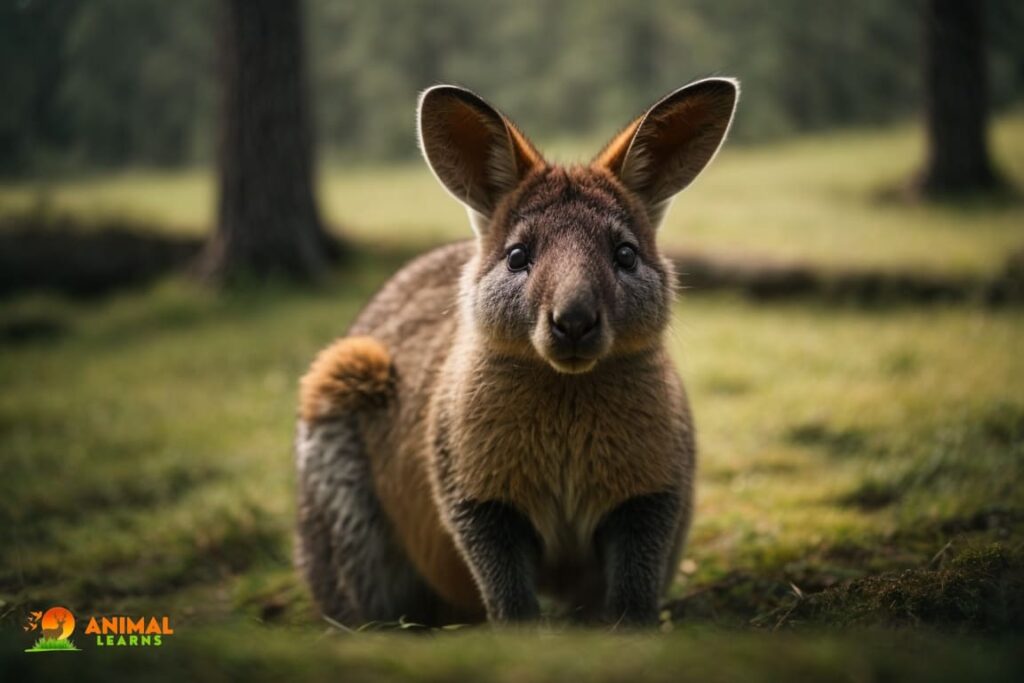
| Basic Information | Information |
| Scientific Name | Various species in family Macropodidae |
| Weight | Varies by species, typically 1-24 kg |
| Size | Varies by species, 30-180 cm |
| Color | Varies by species, often gray or brown |
| Jumping Distance | Varies by species, generally several meters |
| Jumping Height | Varies by species, typically up to 1 meter |
Although smaller in height than kangaroos, wallabies are also exceptionally good jumpers. They can maneuver through the dense underbrush of their wooded homes with agility thanks to their strong and quick hind limbs.
Wallabies provide us with a glimpse of the diversity of marsupials and their modes of mobility by using their leaping abilities to travel quickly and gracefully across the environments they have selected.
Howler Monkeys
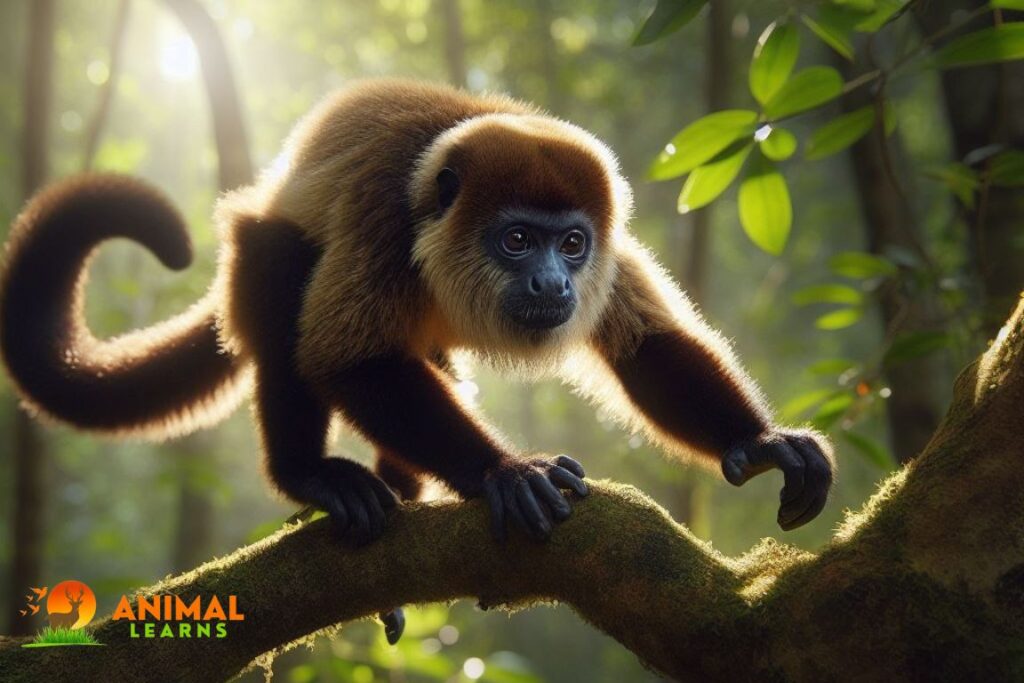
| Basic Information | Information |
| Scientific Name | Alouatta |
| Weight | 15 – 22 pounds (7 – 10 kg) |
| Size | 16 – 28 inches (40 – 70 cm) |
| Color | Typically black or brown, but species-specific variations occur. |
| Jumping Distance | They are not known for long jumps, but they can leap between trees with the help of their tails and brachiation. |
| Jumping Height | Howler monkeys typically leap and swing within the forest canopy, which can vary in height depending on their habitat, but their jumps are not characterized by great vertical height. |
The powerful tails of howler monkeys, which are found in the deep woods of Central and South America, allow their peculiar leaping styles.
Howler monkeys thrive at traveling through the canopy by utilizing their tails to wrap around branches and using brachiation, a swinging motion between trees, even though they may not be the fastest or most agile jumpers.
With the help of their tails, they can leap and move elegantly across the forest canopy, giving them access to food sources and facilitating social interaction.
Hare (Lepus europaeus)
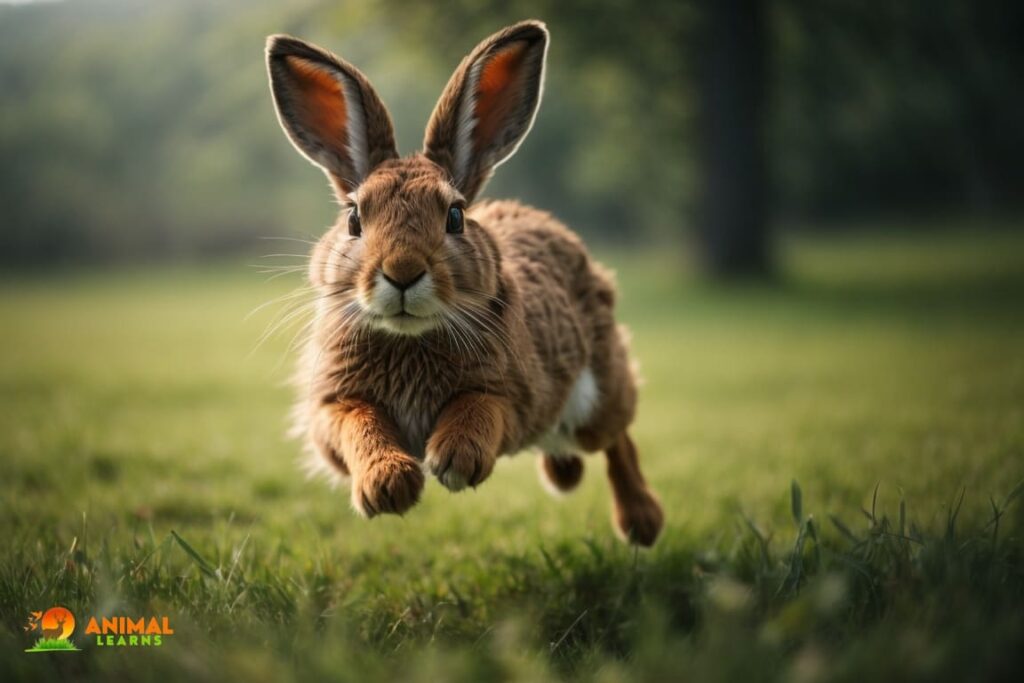
| Basic Information | Details |
| Scientific Name | Lepus europaeus |
| Weight | 3-12 pounds |
| Size | 18-28 inches |
| Color | Various colors |
| Jumping Distance | Not a notable jumper |
| Jumping Height | Not a notable jumper |
A hare is another example of animals that jump. Hares are herbivores and live solitarily or in pairs. They look like rabbits but differ in size, color, bones, and more. With oversized ears, they can jump heights of 1.5 meters. Some species of hares can jump even higher, reaching heights of 3 meters (10 feet) in a single hop.
Springbok (Antidorcas marsupialis)
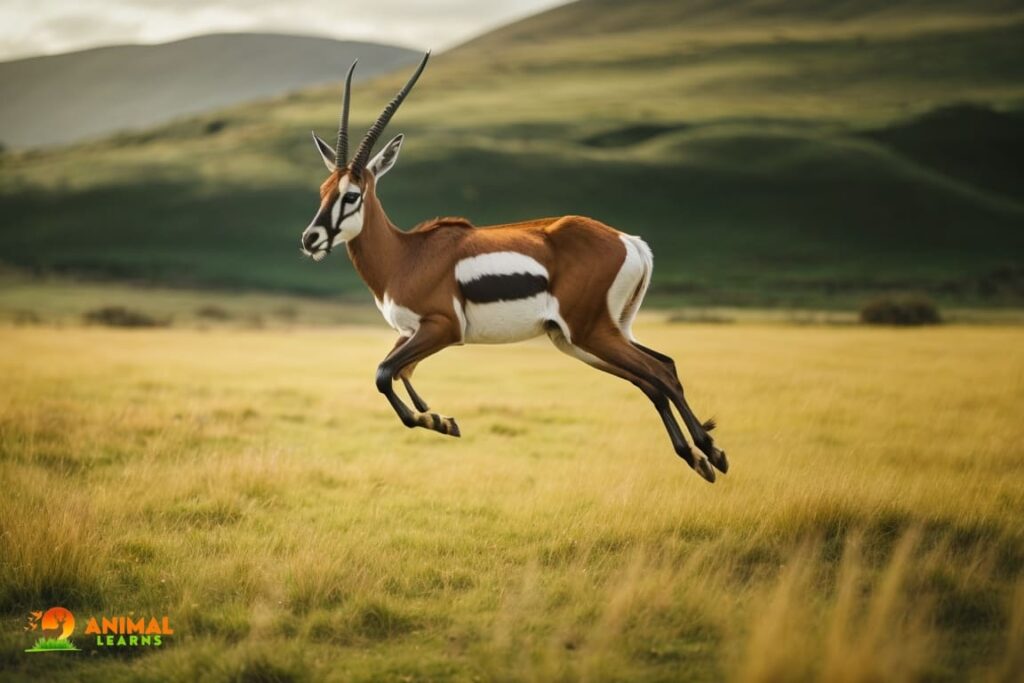
| Basic Information | Details |
| Scientific Name | Antidorcas marsupialis |
| Weight | 60-100 pounds |
| Size | 28-35 inches |
| Color | Light brown, white |
| Jumping Distance | 3.5 meters |
| Jumping Height | 1.5 meters |
The Springbok, a species of antelope native to southern Africa, is one of the remarkable animals that jump with incredible agility and grace in response to potential threats, showcasing their extraordinary leaping abilities.
The tiny to medium-sized antelope known as the springbok, which is endemic to the dry areas of southern Africa, is well-known for its amazing leaping abilities.
The term “pronking” or “stotting,” which refers to their impressive high jumps into the air, is where the term “springbok” originates.
These acrobatic performances have various functions, including communicating and avoiding danger.
Praying Mantis (Mantodea)
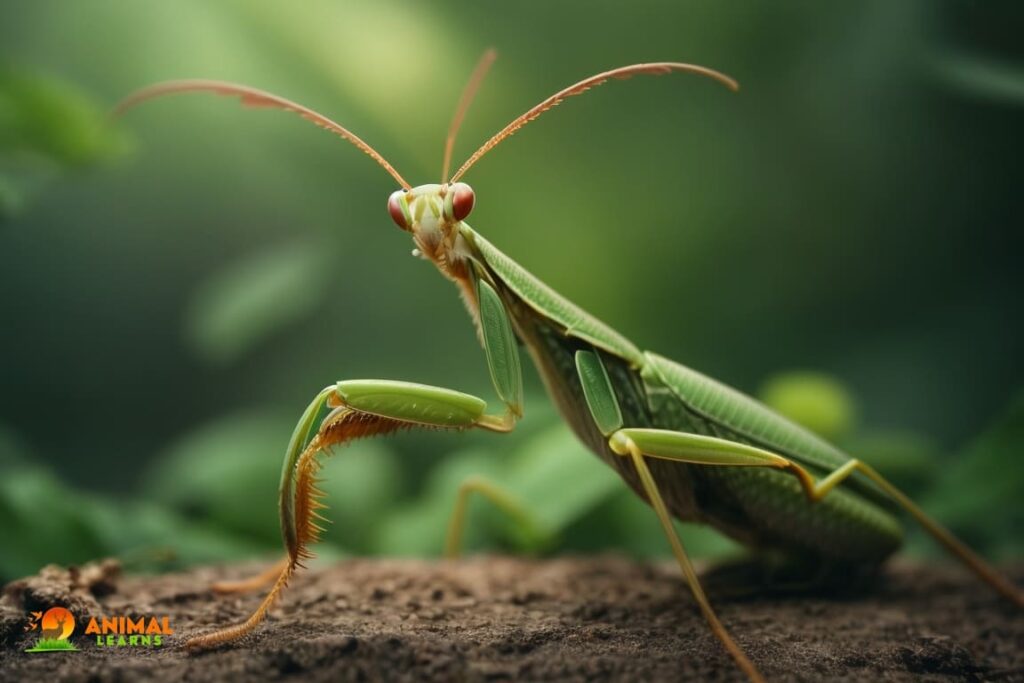
| Basic Information | Details |
| Scientific Name | Various species |
| Weight | Varies |
| Size | Varies |
| Color | Typically green or brown |
| Jumping Distance | Not a notable jumper |
| Jumping Height | Not a notable jumper |
The praying mantis is an eye-catching bug with a distinctive stance that resembles a position of prayer. Strong forelegs of these predatory insects are built for catching and gripping prey.
They perform amazing feats of skill with their controlled and correct jumps which let them surprise unaware insects and other tiny animals.
Kangaroo Rat (Dipodomys spp.)
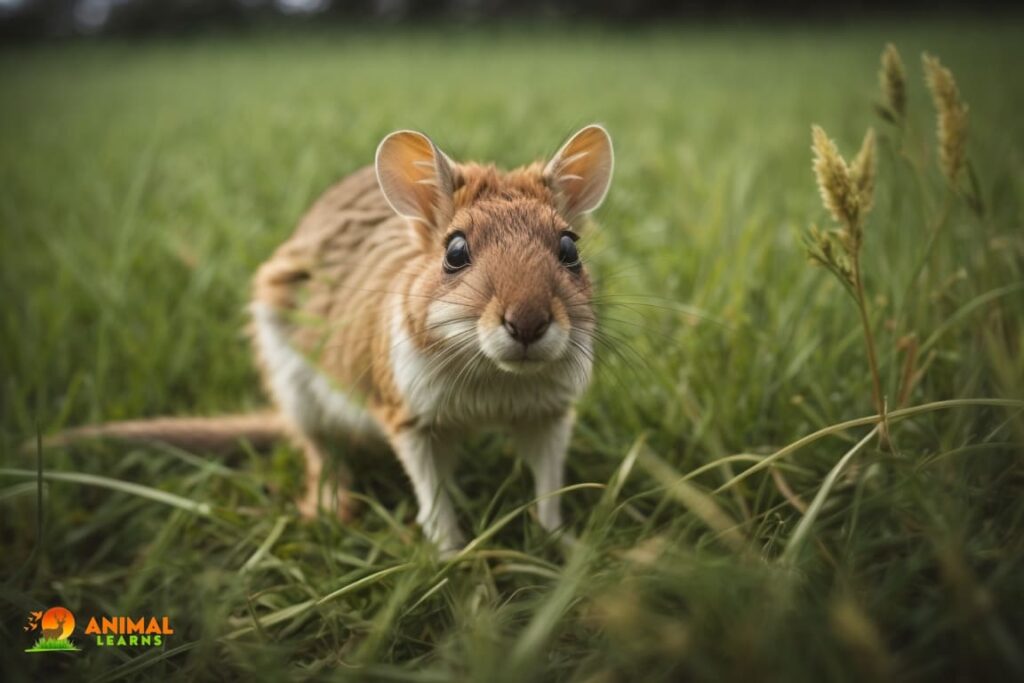
| Basic Information | Details |
| Scientific Name | Dipodomys species |
| Weight | 2-4 ounces |
| Size | 9-12 inches |
| Color | Sandy brown to gray |
| Jumping Distance | Up to 9 feet |
| Jumping Height | About 6 times its body length |
Incredible animals that jump, native to North America, are kangaroo rats. They are particularly well-recognized for their remarkable leaping ability and are well-suited to dry settings.
They can leap deftly over the sandy deserts they their home, dodging predators and searching for seeds at night thanks to their large rear limbs and powerful tails.
Impala
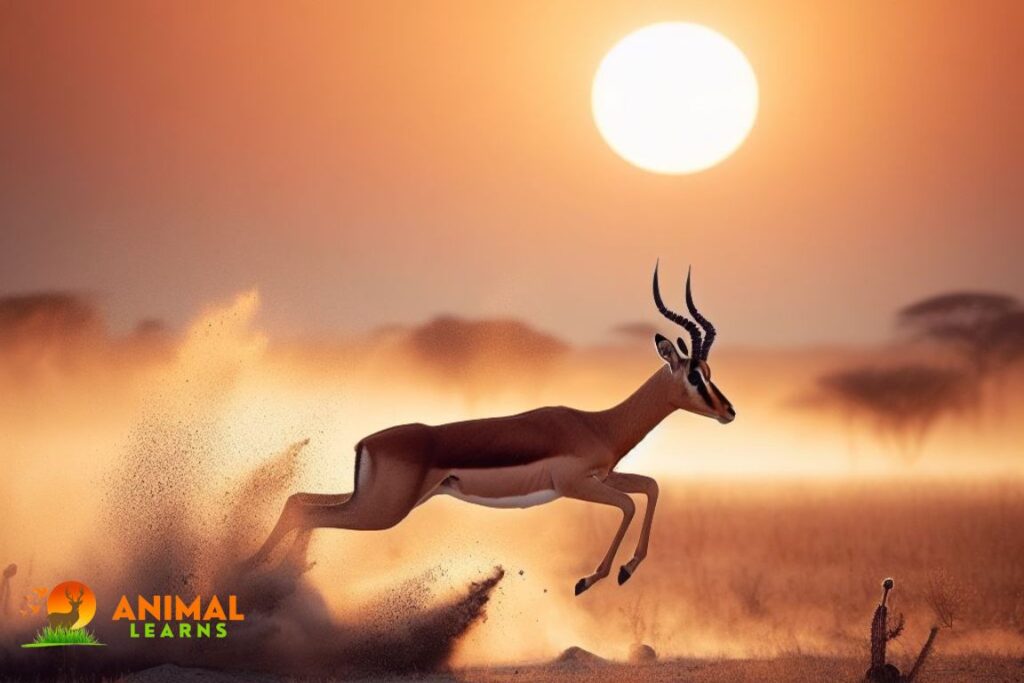
| Basic Information | Information |
|---|---|
| Scientific Name | Aepyceros melampus |
| Weight | 40 – 76 kilograms (88 – 168 pounds) |
| Size | Height: 75 – 95 centimeters (30 – 37 inches) at the shoulder, Length: 120 – 160 centimeters (47 – 63 inches) |
| Color | Reddish-brown with white underbelly and facial markings |
| Jumping Distance | Up to 3 meters (10 feet) |
| Jumping Height | Up to 3 meters (10 feet) |
Impala, or Rooibos, is a medium-sized antelope in eastern and southern Africa. Impalas usually jump when they escape from predators, to survive on the terrain where they live, or even just for fun. Impalas can jump as high as 3 meters (10 feet).
Springbok and impala are similar in shape, color, and size but they are two different animals.
Jumping Spider
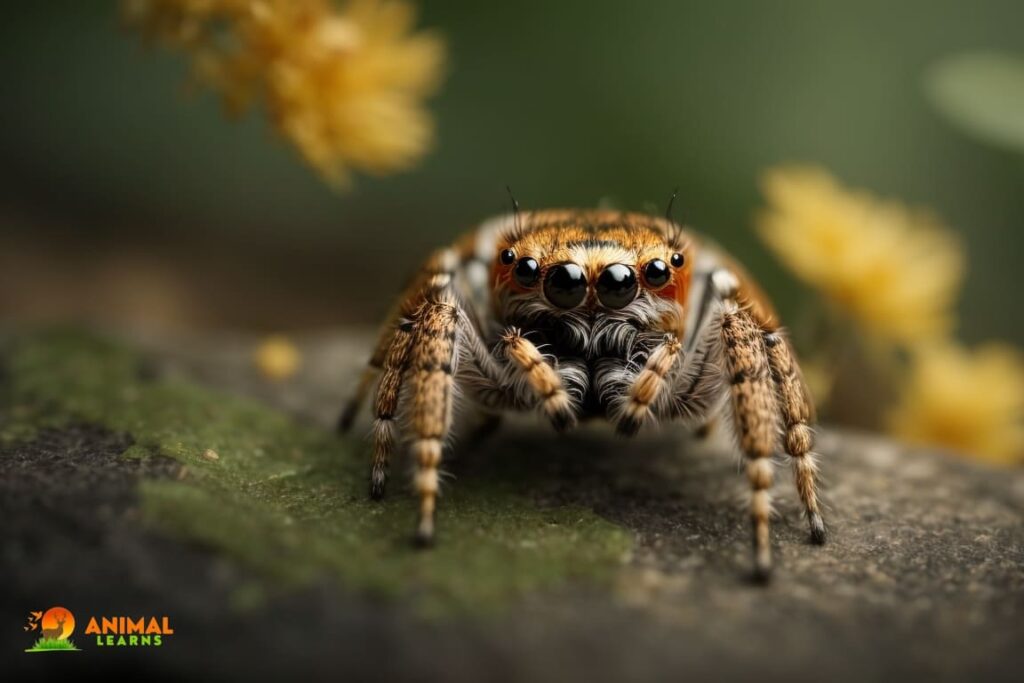
| Basic Information | Details |
| Scientific Name | Various species |
| Weight | Varies |
| Size | 0.04-0.4 inches |
| Color | Varied, often black and white |
| Jumping Distance | Up to 50 times its body length |
| Jumping Height | Up to 30 times its body length |
An amazing example of evolutionary adaptation is the jumping spider, an arachnid with incredible agility. These little predators use their extraordinary leaping skills to pounce on unaware victims.
They navigate their environment with astounding accuracy, using their sharp eyesight and silk threads for protection, jumping with amazing accuracy to secure their food.
Jumping Ant
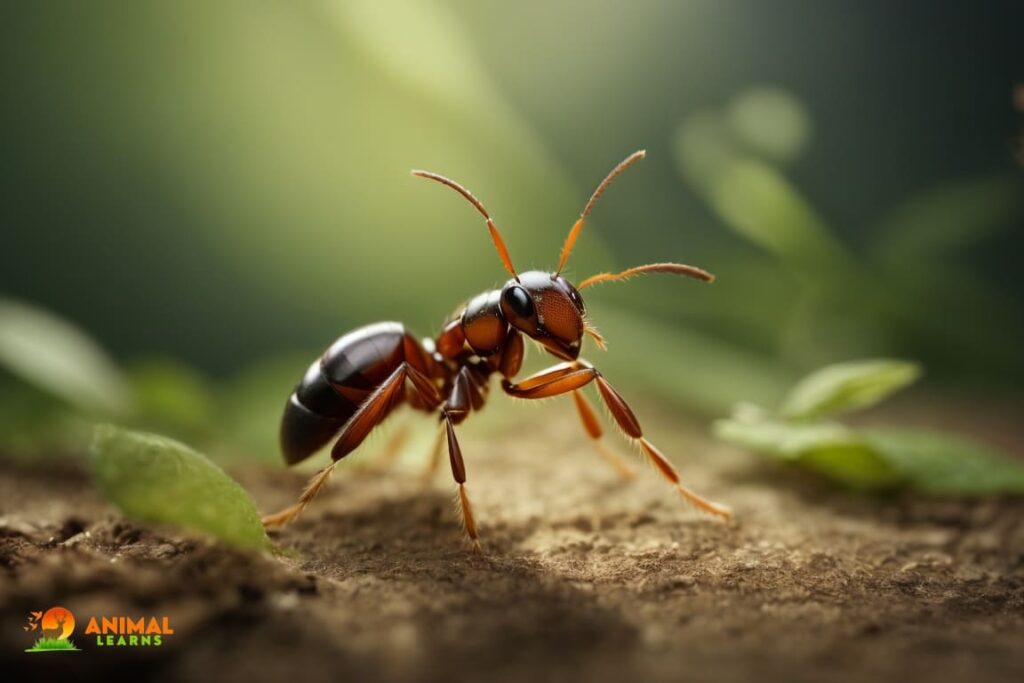
| Basic Information | Details |
| Scientific Name | Myrmecia species |
| Weight | Varies |
| Size | Varies |
| Color | Typically dark or reddish-brown |
| Jumping Distance | Short jumps |
| Jumping Height | Varies |
The Jumping Ant is a fascinating example of animals that jump. Although ants are frequently thought of as being hard workers, several species of jumping ants have evolved in different ways. These ants are distinct from other ants in that they can jump by using their strong legs. This ability helps them hunt for food and flee from predators.
Jumping Fish (e.g., Flying Fish)
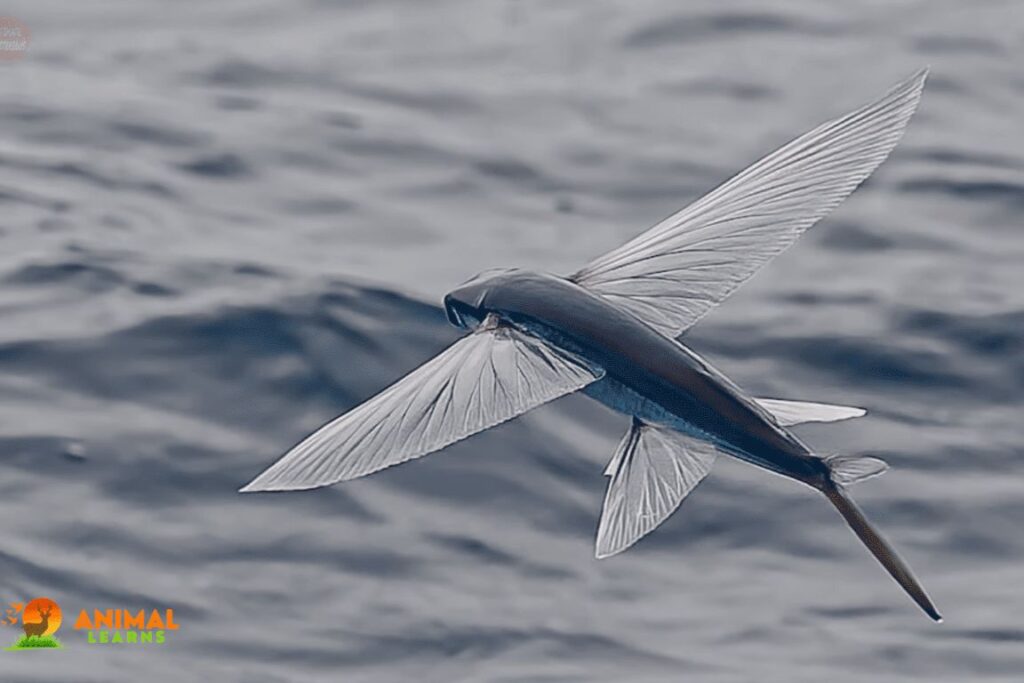
| Basic Information | Details |
| Scientific Name | Exocoetidae family |
| Weight | Varies |
| Size | Varies |
| Color | Silver or metallic |
| Jumping Distance | Up to 6.6 feet |
| Jumping Height | Up to 20 feet |
A unique aquatic organism that defies expectations is the flying fish. It is a fish with specialized fins, not a bird, that can “fly” above the water’s surface.
They use their jumps from the water to travel great distances swiftly and to escape from underwater predators. This adaptation’s evolutionary history demonstrates the inventiveness of nature.
Jumping Mouse

| Basic Information | Details |
| Scientific Name | Zapus species |
| Weight | 0.3-1.1 ounces |
| Size | 3-5 inches |
| Color | Brown or gray |
| Jumping Distance | Short, hopping leaps |
| Jumping Height | Low, a few inches |
Animals that jump, such as the jumping mouse, are small rodents native to North America and are skilled at leaping. Their large hind limbs are ideal for making quick, nimble motions.
These mice typically move through dense foliage by leaping, and it is quite amazing how much land they can cover so quickly.
Jumping Snake
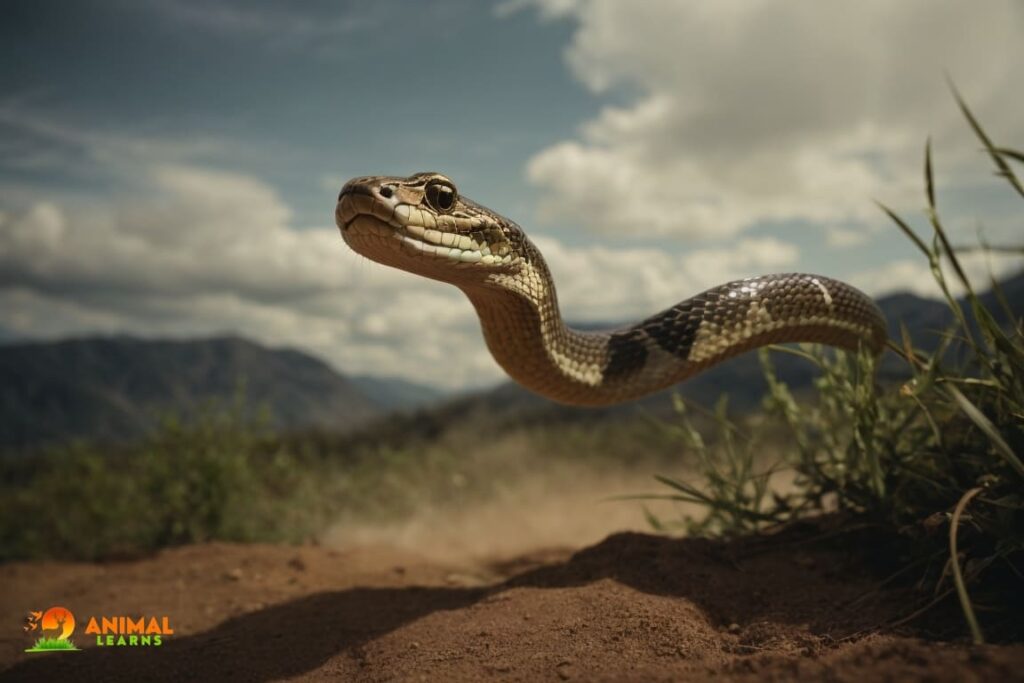
| Basic Information | Details |
| Scientific Name | Chrysopelea species |
| Weight | Varies |
| Size | 2-4 feet |
| Color | Green or brown |
| Jumping Distance | Up to 100 feet |
| Jumping Height | Up to 100 feet |
Although leaping is not something that people normally connect with snakes, several species have developed special adaptations for it.
For instance, the Paradise Tree Snake is renowned for its exceptional leaping skills, which it uses to hop between trees. This demonstrates how adaptable reptiles are to different surroundings.
Jumping Stick Insect

| Basic Information | Details |
| Scientific Name | Various species |
| Weight | Varies |
| Size | 0.5-6 inches |
| Color | Brown, green, or bark-like |
| Jumping Distance | Short, erratic jumps |
| Jumping Height | Low, a few inches |
The Phasmatodea order is home to the amazing leaping stick insect, which is distinguished by its extraordinary capacity to leap when startled.
Even though crawling is their preferred means of mobility, they are capable of brief leaps that can catch predators off guard and provide a fleeting escape.
Jumping Bean Weevil
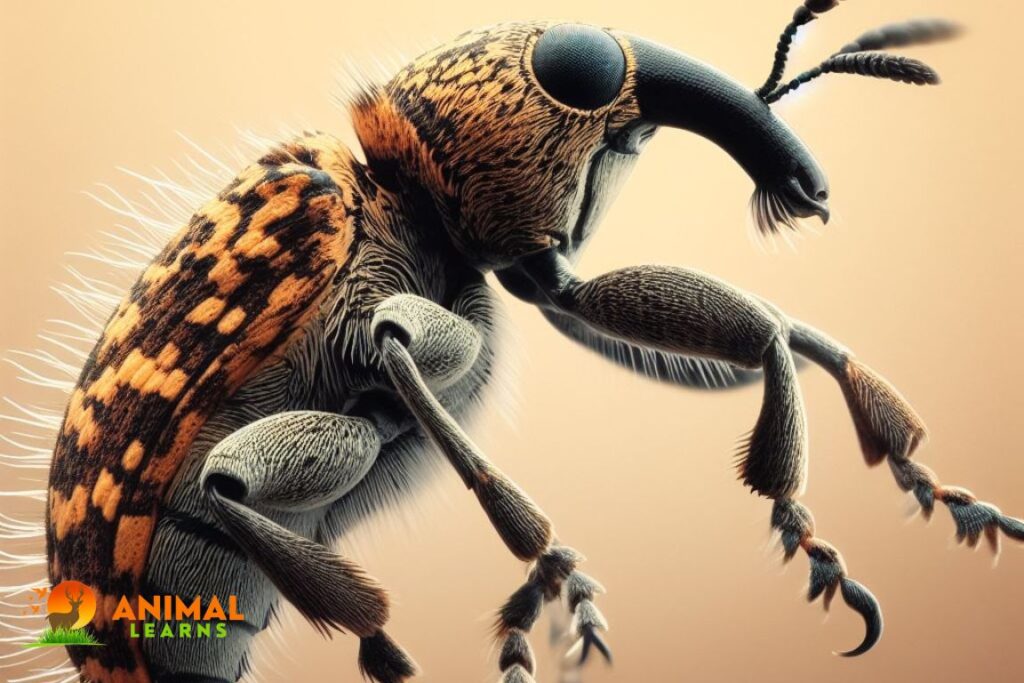
| Basic Information | Details |
| Scientific Name | Algarobius Prosopis |
| Weight | Varies |
| Size | About 0.2 inches |
| Color | Dark brown to black |
| Jumping Distance | Short, erratic jumps |
| Jumping Height | Low, a few inches |
The little Mexican native leaping bean weevil is distinguished by the unusual activity of its larvae. When seeds are warmed, the larvae they live in cause them to leap.
These beans’ “jumping” is the consequence of the motions of the larvae, and it is an amazing illustration of how insects and plants have co-evolved.
Jumping Cavy (e.g., Mara)
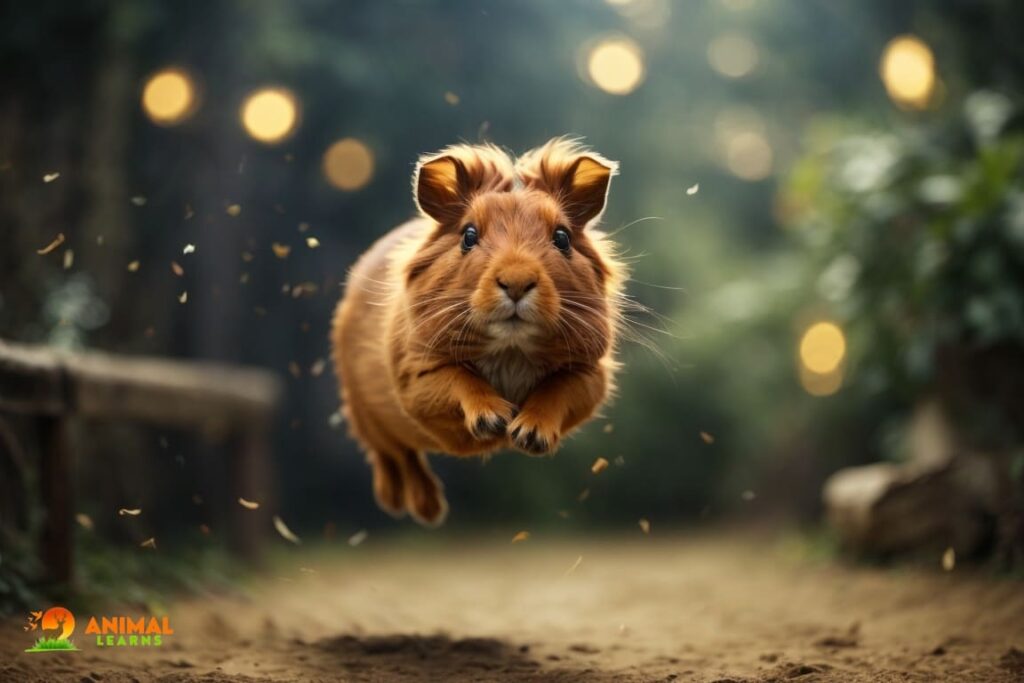
| Basic Information | Details |
| Scientific Name | Dolichotis species |
| Weight | 11-17 pounds |
| Size | 20-26 inches |
| Color | Brownish-gray |
| Jumping Distance | Up to 6 feet |
| Jumping Height | Varies |
The Jumping Cavy is a fascinating example of animals that jump, showcasing agile and energetic movements with its impressive leaping abilities.
A large rodent found in South America is called a mara, often referred to as a Patagonian cavy. They have powerful hind limbs that they might utilize to leap when frightened or to pursue a partner. These leaps are used for a variety of purposes, including social signaling and avoiding predators.
Animals That Hop And Fly
Animals that hop and Fly” encompass a fascinating subset of creatures that effortlessly transition between terrestrial and aerial environments. The grasshopper, known for its remarkable jumping ability, exemplifies the fusion of both skills in animals that jump.
These insects employ powerful hind leg muscles for high-speed jumps, and they often take to the air for short flights. Furthermore, certain frogs possess the remarkable capacity to jump from a standing start into impressive glides, combining the art of leaping with flight.
Their graceful and agile movements highlight the incredible adaptations and versatility found in the natural world, as these animals navigate various ecosystems with finesse.
FAQs
What are some animals that are known for their exceptional jumping abilities?
Kangaroos, grasshoppers, and fleas are renowned for their remarkable jumping skills. Kangaroos, in particular, can cover impressive distances with each leap.
How do animals like frogs jump and swim simultaneously?
Frogs have strong leg muscles that allow them to powerfully leap from land into the water. Their webbed feet then aid them in swimming.
Can all animals jump equally high and far?
No, jumping abilities vary greatly among species. For example, fleas can jump approximately 350 times their body length, while kangaroos can clear up to 3 times their body height.
What is the purpose of jumping in animals?
Jumping serves various purposes, including escaping predators, capturing prey, and covering distances efficiently. In some species, it’s also a form of courtship or communication.
How high can kangaroos jump?
Kangaroos can leap up to 10 feet in a single jump, thanks to their powerful hind legs.












